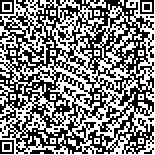王开乐,初晓,张仲义,王琳,沈娜娜,薛俊强,李铁山.A型肉毒毒素关节腔注射对佐剂性关节炎大鼠的抗炎效果观察[J].中华物理医学与康复杂志,2016,38(1):7-12
扫码阅读全文

|
| A型肉毒毒素关节腔注射对佐剂性关节炎大鼠的抗炎效果观察 |
|
| |
| DOI: |
| 中文关键词: A型肉毒毒素 关节炎 大鼠 完全弗氏佐剂 |
| 英文关键词: Botulinum toxin type A Arthritis Rats Complete Freund adjuvant |
| 基金项目: |
|
| 摘要点击次数: 4699 |
| 全文下载次数: 6628 |
| 中文摘要: |
| 目的观察A型肉毒毒素(BoNT/A)踝关节腔注射对佐剂关节炎大鼠模型的抗炎作用。 方法选取Wistar大鼠90只,于左后足趾皮下注射完全弗氏佐剂(CFA)0.1ml进行免疫,从而制作大鼠佐剂诱导性关节炎(AIA)动物模型。待AIA模型成模后,采用随机数字表法将其分为BoNT组(向踝关节腔内注射BoNT/A)、生理盐水组(向踝关节腔内注射生理盐水)和假手术组(行踝关节腔穿刺但不注射药物);另选取30只健康Wistar大鼠纳入空白组。大鼠于免疫后每隔3d行踝关节红外热成像拍摄以及踝关节关节炎指数评分;成模后分别于成模当天、成模后7d、成模后14d时行红外热成像拍摄、白细胞介素-1β(IL-1β)蛋白检测以及踝关节HE染色、评分。 结果大鼠免疫后3d时其关节炎指数开始升高,于免疫10d左右时关节炎指数明显升高,并随疾病进展逐渐增高,至免疫18~20d时达到峰值。红外热成像检查显示,大鼠免疫后出现右侧踝关节区域温度明显升高,随着炎症发展,温度呈逐渐下降趋势,免疫20d时双侧踝关节平均温度维持在37.5~38.0℃。成模后7d、14d时BoNT组可观察到双侧足趾平均温度较成模当天时明显下降,与同时间点生理盐水组及假手术组间差异均具有统计学意义(P<0.05);成模后7d、14d时BoNT组踝关节腔滑膜中IL-1β蛋白表达较成模当天时明显降低,并且与相同时间点生理盐水组及假手术组间差异亦具有统计学意义(P<0.05)。成模后7d、14d时除空白组外,其余各组大鼠滑膜组织增生、炎性细胞浸润、软骨破坏及软骨下骨质暴露程度均较成模当天时有不同程度加重;并且BoNT组在成模后7d、14d时HE评分[分别为(3.8±0.63)分和(3.7±0.86)分]均显著低于相同时间点模型组及生理盐水组水平(P<0.05)。 结论关节腔内注射BoNT/A对佐剂关节炎大鼠具有抗炎作用。 |
| 英文摘要: |
| Objective To verify the anti-inflammatory effects of intra-articular injection of botulinum toxin type A (BoNT/A) on adjuvant-induced arthritis using a rat model. MethodsA murine model of chronic ankle arthritis was established in 90 Wistar rats by injection of 0.1 ml of complete Freund adjuvant (CFA) into the pads of their left paws. They were then randomly divided into a BoNT group (n=30) which received an intra-articular injection of 0.1 ml (20 IU) of BoNT/A, an NS group (n=30) which received intra-articular injection of 0.1 ml of normal saline solution and a sham group (n=30) which were punctured without any injection. In addition, 30 normal rats formed a control group. Infrared thermal imaging was performed and an index of arthritis was evaluated every three days. The infrared thermal imaging revealed the expression of interleukin-1β (IL-1β) through hematoxy-eosin (HE) staining. ResultsThe arthritis index began to increase 3 days after the injection of CFA and it had increased significantly after 10 days, reaching a peak value of 18, 24 days after the injection. The infrared thermal imaging showed that the temperature in the right paw increased greatly after the injection. Following the development of arthritis, the temperature declined gradually, arriving at a steady temperature of between 37.5 and 38.0 ℃ in both ankles 20 days after the injection. The average temperature in both paws of the BoNT group had decreased significantly more by 7 and 14 days after the injection than in the NS and sham groups. The expression of IL-1β in the synovium of the ankle joint also had decreased significantly more in the BoNT group after 7 and 14 days. HE scoring showed an obvious histopathologic change in the hypertrophic synovium, inflammatory cell infiltration, cartilage destruction and exposure of subchondral bone after 7 and 14 days compared with right after the injection in all groups except the control group. Moreover, the average HE scores of the BoNT group rats after 7 and 14 days were significantly lower than those seen in the NS and sham groups at the same time points. ConclusionIntra-articular injection of botulinum toxin type A has an anti-inflammatory effect on arthritis induced by complete Freund adjuvant, at least in rats. |
|
查看全文
查看/发表评论 下载PDF阅读器 |
| 关闭 |